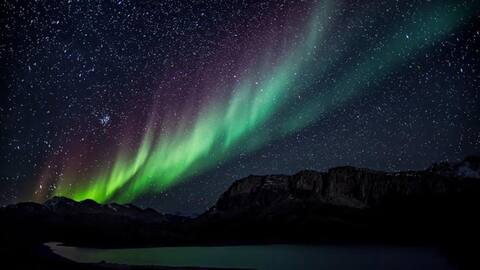Here's why we are seeing northern lights so much lately
What's the story
The northern lights, or the aurora borealis, have been more visible in recent years. Once considered a rare spectacle or merely an excuse to visit the Arctic circle, these stunning displays are now regularly spotted across much of the United States, enchanting viewers far beyond their typical northern confines. Astronomers attribute this phenomenon to the sun being at its "maximum" during its 11-year solar cycle.
Solar cycle
Understanding the Sun's 11-year solar cycle
The sun works on an 11-year cycle, moving from a minimum to a maximum state. At its peak, or "maximum," the sun's magnetic poles flip, resulting in increased solar activity. It's similar to Earth's North and South Poles swapping places every decade. The increased solar activity causes bright flares and solar eruptions, NASA, the US space agency, said.
Solar impact
Current solar cycle and its impact on northern lights
The current 11-year solar cycle, the 25th since records began in 1755, started in 2019 and is expected to peak next year. The conditions of this cycle have resulted in the recent surge in northern lights activity. These conditions are likely to continue for months, ensuring more frequent sightings of the Aurora Borealis. The latest round of these stunning displays started on October 8, after a massive sunspot eruption on the sun's surface, 93 million miles away.
Aurora formation
The science behind the Aurora Borealis phenomenon
The sunspot eruption sent a stream of electrically charged particles, called ions, toward Earth. This stream is called solar wind. When these charged particles collide with gasses in Earth's atmosphere around the magnetic poles, light is emitted at different wavelengths. This collision creates the colorful blinking and swirling displays called the northern lights. During this maximum moment in the solar cycle, more sunspots lead to more Coronal Mass Ejections sending charged particles to Earth, creating the aurora.
Future sightings
Expect more northern lights in the coming months
Most northern lights activity occurs near the Arctic Circle in the northern hemisphere. However, during periods of strong solar activity, this spectacle can extend to a larger area. Experts predict that increased solar activity and a growing number of sunspots will lead to more Coronal Mass Ejections directed toward Earth in the coming months. To fully enjoy these celestial displays, it's best to find a dark location away from artificial light sources and under clear, unobstructed skies.
